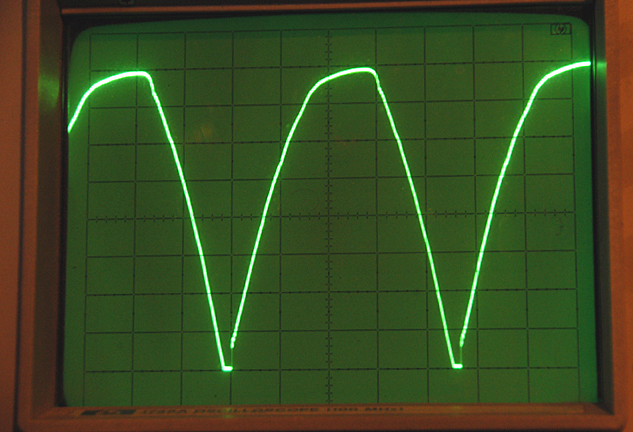|
I was playing with new power supply over this weekend, trying to optimize everything. First I got rid of bleeders at all B+ - it has enough critical current with them according to my measurements after the bride. All supplies after the first choke have no ripples but a perfect sinusoid. The AC after the second filtering stage in the all supplied except the single-stages is un-measurable. The single-stages B+ has after LCRC (200uf, 15H, 500R, 100uF) AC of 5mV. I will see if it is stay when I will be listening the thing – I might drive the capacitance lover.
Those Silicon Carbide diodes are very nice and I have an accidental stress testing. I made all PS to be shorted by 50R resistor as the amp turned off. I use 3 individual 5A relays that turned to be too flimsy for the task as the capacitance of the two stages supple is too large. So, one of the relays but welded and when I turned the amps next time the B+ of the first stage was shorted by 50R resistor. It is 75W aluminum resistor direct-mounted on the metal chassis (not visible on the picture above). So, I turned the amps and went to shower. When I got back my room was full of smoke, I ran to the amp to shut it down, figuring that it should be all burned. The entire amp’s chassis was near 80-90C, I turned the amps off. The 50R resistor was the temperature of supernova. It was not burned through though and the diodes DID NOT BURN!!!! The resistor after baking measured 33R. Well, I figured that 33R against 400V – so we are taking about the 12A of continue currant – not bad at all for 600V Schottky!!!
There is some open issuers as well. If to look between the bridge and the first choke the beginning of the waves look very strange. If you look at the picture then you will see that voltage go to zero as it shell (calibrated at first square), then there is a there is very small horizontal step and then, what the new wave states there is a very strange vertical half square rise. I wonder where it comes from. Is it some kind of anomalies of my toroidal chokes? Should I worry about it? The voltage after the choke gets converted into as perfect sinusoid anyhow… I do not know the answer yet.

Also, the 400V supply, driven into the toroidal choke show some choke ringing. I wonder if I need to fight with it. The choke overrides the ripples into sinewave anyhow and the second filtration stage kills any sights of AC anyhow. So, how bad the choke ringing and does it has any effect to sound? One of the advantages of use the very large last cap is that all “qualities” of PS become less relevant from sonic point of view. So, does the choke ringing matters? Rgs, The Cat
"I wish I could score everything for horns." - Richard Wagner. "Our writing equipment takes part in the forming of our thoughts." - Friedrich Nietzsche
|